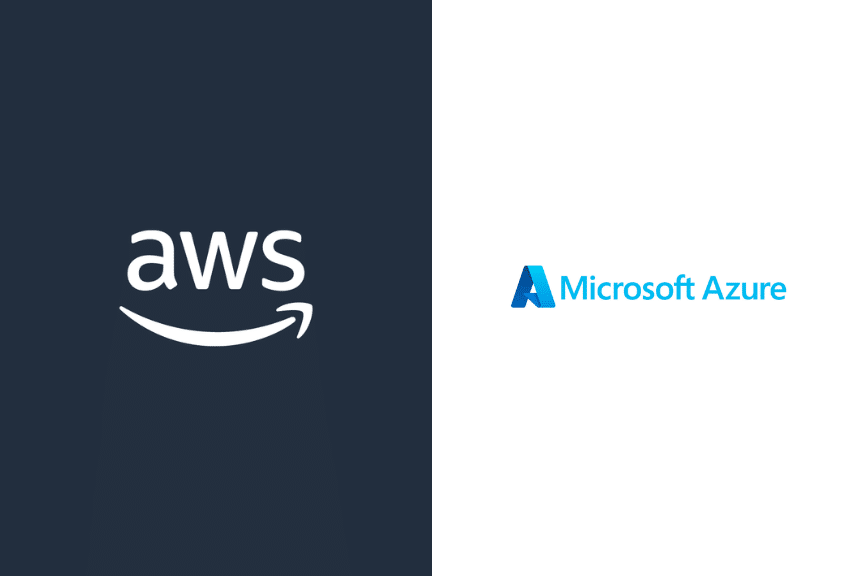Deciding between AWS and Azure for your business’s cloud computing needs can be a daunting task. Both of these leading cloud platforms offer a wide range of services and features, making it challenging to determine which is the right fit for your specific requirements. In this guide, we will decode the key differences between AWS and Azure and help you find the right fit for your business.
Table of Contents
We will explore various aspects such as pricing models, scalability, security, and global presence, providing you with a clear understanding of how AWS and Azure differ. By the end of this guide, you’ll be better equipped to choose the ideal cloud provider for your business’s unique needs, ensuring optimal performance, cost-efficiency, and scalability.
Understanding AWS (Amazon Web Services)
Amazon Web Services (AWS) is a cloud computing platform offered by Amazon. It provides a wide range of services, including computing power, storage options, and database solutions. AWS is known for its scalability and flexibility, allowing businesses to scale their resources up or down based on demand. With a vast global infrastructure and data centers in multiple regions, AWS offers high availability and low latency for users worldwide.
One of the key advantages of AWS is its extensive service catalog. It offers a comprehensive range of services, including Elastic Compute Cloud (EC2) for virtual servers, Simple Storage Service (S3) for object storage, and Relational Database Service (RDS) for managed databases. AWS also provides specialized services like Lambda for serverless computing and Elastic Beanstalk for easy application deployment.
AWS has a pay-as-you-go pricing model, allowing businesses to pay only for the resources they use. This flexibility makes it suitable for businesses of all sizes, from startups to enterprise-level organizations. Additionally, AWS offers various pricing options, including on-demand, reserved instances, and spot instances, enabling businesses to optimize costs based on their usage patterns.
Understanding Azure (Microsoft Azure)
Microsoft Azure is a cloud computing platform offered by Microsoft. It focuses on providing seamless integration with Microsoft’s existing suite of tools and services, making it an attractive option for businesses heavily reliant on Microsoft technologies. Azure offers a wide range of services, including virtual machines, storage, databases, and analytics tools.
One of the key advantages of Azure is its strong integration with Microsoft’s productivity suite, including Office 365, Dynamics 365, and Windows Server. This integration allows businesses to easily extend their existing on-premises infrastructure to the cloud, leveraging their investments in Microsoft technologies.
Azure offers a similar pay-as-you-go pricing model to AWS, allowing businesses to pay for the resources they use. It also provides various pricing options, including reserved instances and spot instances, to help businesses optimize costs. Azure’s pricing is competitive, and businesses can often find cost savings by leveraging their existing Microsoft licenses.
AWS vs Azure: The Key Differences
Pricing Comparison between AWS and Azure
AWS predominantly operates on a pay-as-you-go model, offering flexibility without contracts, upfront payments, or cancellation fees. This flexibility permits users to scale capacity up or down as needed, charging by the second hour for compute and database capacity. AWS also offers several pricing models, including On-Demand, Savings Plans, Spot Instances, Reserved Instances, and Dedicated Hosts, each tailored to different use cases and offering varying degrees of cost optimization.
Azure, on the other hand, similarly follows a pay-as-you-go model, billing users based on actual hourly usage. It offers four distinct pricing approaches: Pay-As-You-Go, Azure Hybrid Benefit (BYOL), Reserved VMs, and Azure Spot VMs. The Hybrid Benefit program, in particular, leverages existing Microsoft licenses to provide significant discounts on Azure services. Azure also provides flexibility in terms of payment plans, allowing users to adjust their VM capacity to meet workload demands.
Scalability and Flexibility
When comparing AWS and Azure in terms of scalability and flexibility, both cloud giants offer robust solutions, but there are nuances to consider. AWS is popular for its elastic scalability, allowing users to swiftly scale resources up or down in response to changing demands.
Where Azure stands out is its tight integration with Microsoft technologies, making it particularly appealing for enterprises already invested in the Microsoft ecosystem. Azure’s hybrid capabilities, such as Azure Arc, seamlessly bridge on-premises and cloud environments, offering a unique blend of flexibility and scalability.
Performance and Reliability
When it comes to performance and reliability, both AWS and Azure offer robust solutions. AWS has a reputation for its reliable infrastructure and high availability, thanks to its extensive global data center network. This expansive presence means that businesses using AWS can strategically deploy their applications closer to their target audience. The direct benefit of this is reduced latency, ensuring users experience faster load times and smoother interactions. With tools like CloudFront for content delivery and AWS Global Accelerator, businesses are equipped to provide a seamless and high-performing user experience, regardless of where their users are located.
Integration with Existing Tools and Services
In terms of integration with existing tools and services, both AWS and Azure have their strengths. Azure holds a significant advantage for organizations deeply entrenched in the Microsoft ecosystem. It offers integration with Microsoft products and services like Windows Server, Active Directory, SQL Server, and Office 365.
AWS, on the other hand, provides a wide range of integrations and compatibility with a multitude of third-party tools and platforms. It offers a rich set of APIs, making it relatively straightforward to connect AWS services with existing software and applications. AWS also supports popular development frameworks and tools, allowing for seamless integration into existing workflows.
Case Studies: Companies Using AWS or Azure
To illustrate the real-world applications of AWS and Azure, let’s take a look at a few case studies:
- Netflix – AWS
Netflix, the popular streaming service, relies heavily on AWS for its infrastructure. AWS provides the scalability and flexibility that Netflix requires to handle the massive demand for its streaming services. By leveraging AWS, Netflix can quickly scale its resources to meet peak demand during popular shows or events. - BMW – Azure
BMW, the renowned automotive company, uses Azure for various purposes, including connected car services and manufacturing processes. Azure provides the integration capabilities BMW requires to connect its vehicles and gather data for analysis. Azure’s scalability and reliability ensure that BMW can handle the vast amount of data generated by its connected cars. - Airbnb – AWS
Airbnb, the online marketplace for vacation rentals, relies on AWS for its infrastructure. AWS enables Airbnb to scale its resources based on demand, ensuring a seamless experience for its users. By leveraging AWS’s global presence, Airbnb can deploy its services closer to its users worldwide, reducing latency and improving performance.
These case studies highlight the versatility and scalability of both AWS and Azure, showcasing how these cloud platforms can support businesses of different sizes and industries.
Conclusion: Why AWS is the Clear Market Leader
AWS has been in the cloud computing industry for longer than Azure, giving it a significant advantage in terms of experience and maturity. This extensive experience translates to a deeper understanding of customer needs, leading to more refined services and solutions. Being a pioneer in the industry, AWS has had the opportunity to iterate and improve its offerings based on real-world customer feedback.
In addition, AWS offers a wide variety of benefits to startups, including a free startup migration to AWS and up to $100,000 in free AWS credits through the AWS Activate Program. AWS is cost-effective and scalable, making it an excellent starting point for startups.
While both AWS and Azure have their advantages, AWS stands out with its experience, unified ecosystem, and continuous innovation. For businesses seeking a mature, robust, and feature-rich cloud platform, AWS is the clear choice.








